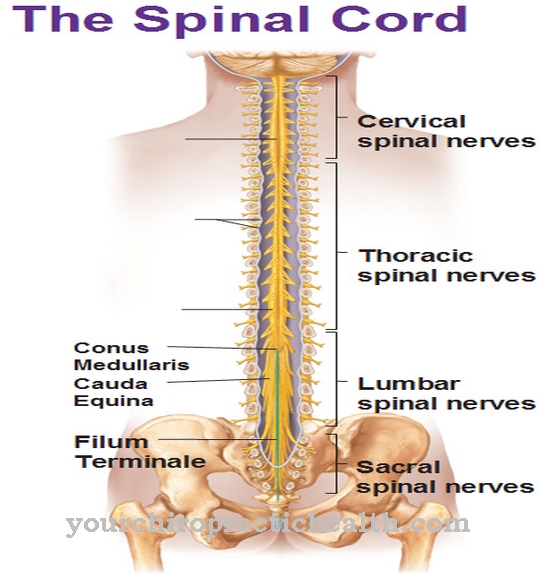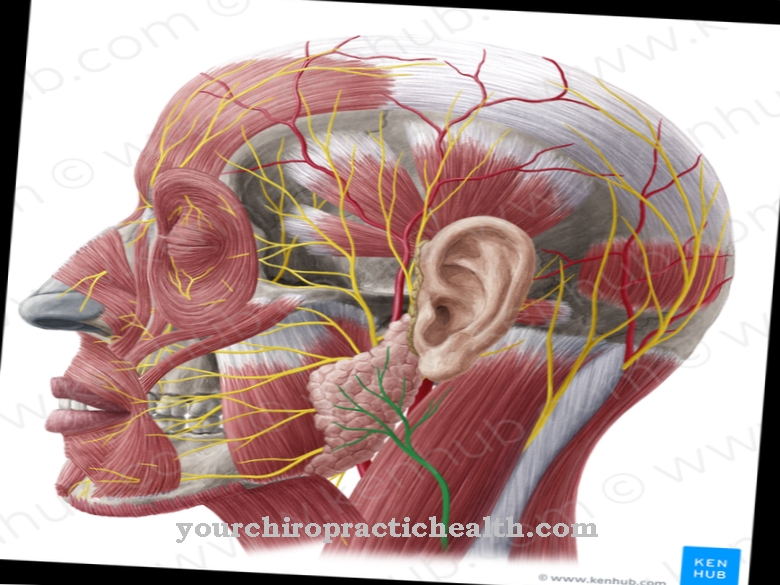Of the Optic nerve is responsible for making it possible for people to recognize their environment. This makes it one of the most important parts of the eyes. Different diseases can limit the function of the optic nerve.
What is the optic nerve?
Of the Optic nerve consists of nerve fibers. These are responsible for ensuring that the image, which is perceived via the most important sense organ, reaches the brain. A total of around 1 million nerve fibers unite in the optic nerve. An image can only be created if the signals are properly passed on to the brain.
The optic nerve works primarily with incident light. It runs from the eyeballs to the brain. In order to be able to adapt to all movements, it is available in an S-shape. Some doctors define the optic nerve less as a nerve and much more as a “path” of the brain. The performance and function can be compared to the white brain mass.
In addition, the optic nerve is supplied by blood vessels that emerge from the soft meninges. The course of the optic nerve has several parts. Before the optic nerves reach the brain, they cross each other. As soon as the nerves are damaged by an illness or external violence, serious consequences and complaints cannot be ruled out.
Anatomy & structure
The optic nerve connects the retina to the brain. Its length measures about four to five centimeters. The optic nerve is divided into different sections within the eye. The first section lies in the eyeball and is called the intrabulbar part. After leaving the eyeball, it ends in the eye socket.
After the intraorbiatric part, the intracranial part follows. This is located in the skull. The optic nerve consists of nerve fibers that have bundled together. The nerve fibers come from the ganglion cells, which can be located in the innermost cell layer of the retina. The optic nerve runs through the eyeball and leaves it later on the way to the brain. The place where the bundled nerve fibers leave the eye behind is called the papilla. In the general public, this point is increasingly known as the “blind spot”.
The opening in which the optic nerve enters the skull bears the name Canalis Opticus. After passing the eye socket, the optic nerve is also surrounded by the tendon ring of the eye muscles. In the further course of the process, the visual tract crosses before the bundled nerve fibers finally reach the brain in order to be able to pass on the stimuli received.Function & tasks
The optic nerve enables humans to recognize contours, colors and movements. If it were not there, there would only be a black image. Thus, the optic nerve represents a crucial part of the most important sensory organ. The image itself is created by the refraction of light and various processes on the retina.
As soon as light falls on the retina, the radiation generates certain excitations in the eye. The retina finally transfers the image or the excitations in the form of stimuli or signals to the optic nerve. The stimuli are passed on until they reach the brain and the person concerned can recognize their environment. Ultimately, the brain is responsible for creating images from the signals.
The optic nerve only forwards stimuli and not already existing images. The left hemisphere processes the information from the right eye and the right hemisphere converts the signals from the left eye. The junction of the optic nerves that took place beforehand is fundamental for this process.
In most cases, the function of the optic nerve is only perceived when it is hindered by various diseases or restrictions. These have the potential to cause permanent damage. Once patients experience deteriorating eyesight or other symptoms, they shouldn't hesitate to seek medical advice. The fact that the optic nerve is the second cranial nerve illustrates its important function.
You can find your medication here
➔ Medicines for eye infectionsIllnesses & ailments
As soon as the function is restricted, it is usually necessary to design everyday life differently. There are different influences that can be responsible for damage to the optic nerve. Most often these are exercised through external violence.
These include, for example, an accident in which the optic nerve is pulled or crushed. This can happen in a car accident, but also from a punch in the area of the eye. In such cases, bleeding is usually responsible for the symptoms. These often result from the eye socket and lead to an increase in pressure. As a result of the increase in pressure, the optic nerves lose their usual space, instead contusions can occur.
In addition to external violence, infections are also possible. These are often triggered by bacteria and viruses and primarily affect the eye socket. However, damage to the optic nerve cannot be ruled out. Multiple sclerosis often results in inflammation of the optic nerve, with the part behind the eye being particularly affected by the infection. In addition to movement pain, the eyesight is restricted.
Some patients go blind. However, this is not a permanent condition. Despite correct measures, however, it cannot be ruled out that the eyesight will no longer return to its original state even after the inflammation has subsided. The “green star” increases the pressure in the eye. The vessels that supply the optic nerve and retina are crushed. Serious damage can result from the undersupply.



























